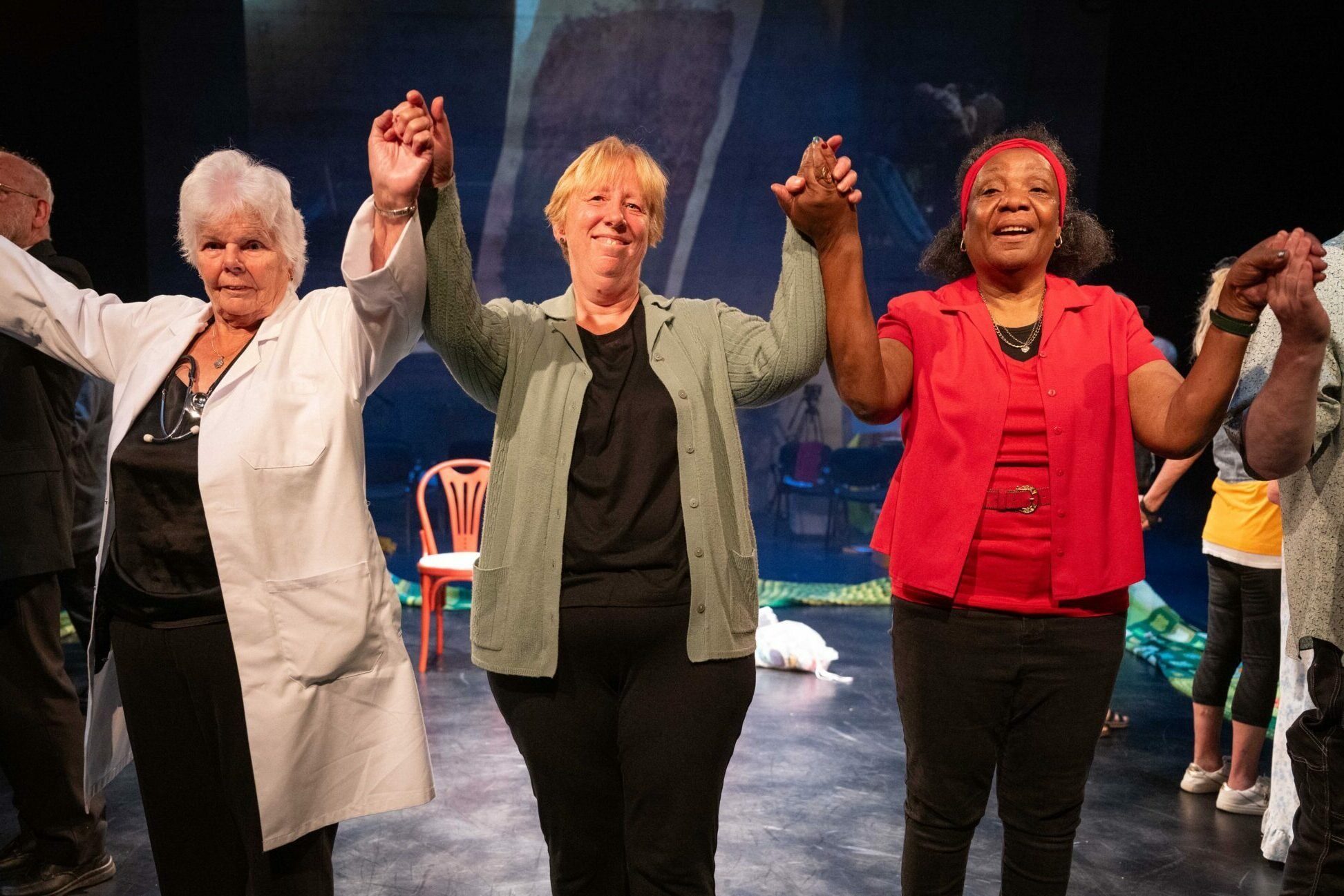
The Belgrade Theatre in Coventry runs weekly drama sessions at its Theatre Hub for over 50s
Photo: Belgrade Theatre
Ensuring bread for all and roses too
At £1bn a year, local government is still the major funder of public culture. But local authorities are facing difficult decisions about supporting their cultural assets and services, write Jonothan Neelands, Mark Scott and Val Birchall.
“It has never been more important to effectively demonstrate where we are investing public money in our services, and in turn being able to articulate the impact that this investment has on our residents, economies and communities.” Ian Leete, Senior Adviser, Culture, Tourism and Sport at the Local Government Association
Following a decade of significant reductions in funding from central government, local authorities wrestle with the problems of providing their statutory duties of service, care and investment in their local communities while maintaining and strengthening the public cultural assets, services and infrastructure that are vital to their identity and their quality of life.
Bread for all and roses too, was the marching call of young millworker women on strike in Lawrence, Massachusetts in 1912. Yes, there needs to be universal access to the bread of basic services and protection for our most vulnerable communities and neighbourhoods, but how can local governments also provide the cultural roses that add so much value to people and their place?
Hard times ahead
There will be increasing pressures to be weathered as local authorities struggle to make ends meet. But the culture and heritage sectors are now better prepared to make their case for funding that directly impacts on the quality of life and wellbeing of their local communities.
Culture is in a stronger position to make evidence-led strategic arguments for how, why and with what effect culture can contribute to a diverse range of cultural and non-cultural benefits to places and people. In terms of priority mental health outcomes for instance, culture prevents downstream costs for local authorities.
Arts Council England’s (ACE) current 10-year strategy Let’s Create – and its underpinning investment principles – put people, communities and creativity centre stage. ACE place-based programmes such as Creative People and Place and Place and Partnership Projects are providing the evidence from evaluations to make the case for local services that deliver health and wellbeing, civic pride, social cohesion and other outcomes enabled through cultural participation and engagement.
The Local Government Association (LGA) and the Chief Cultural and Leisure Officers Association (CLOA) are producing advocacy, strategic support, training and evidence to make the case for culture as a social and economic necessity.
Making a Joint Cultural Needs Assessment (JCNA): Working together to serve our communities
To support the strategic use of ACE’s Culture and Place Data Explorer and the LGA’s Cultural strategy in a box toolkit, a new updated version of the JCNA Guidelines has recently been released by ACE and LGA.
The JCNA is a seven-step plan for culture that is closely aligned to a local authority’s key objectives and priorities. It sets out an evidence-led, partnership model that strongly demonstrates the contribution that culture makes to the most pressing and urgent needs of people and place.
Local authorities have a statutory responsibility to provide a Joint Strategic Needs Assessment (JSNA) to improve local community health and wellbeing outcomes and reduce inequalities. They are not an end in themselves, but a continuous process of strategic assessment and planning. Their core aim is to develop local evidence-based priorities for commissioning which will improve health outcomes and reduce inequalities.
The JCNA applies the JSNA principles and processes to cultural needs. It is not a statutory responsibility. But the JCNA will structure a strategic plan, grounded in evidence-based priorities, to improve access to cultural opportunities for all, that are distinctive to place and the needs of local communities.
The JCNA approach makes four key assumptions:
- that the resources, expertise and accountability of local government are essential to enabling successful cultural place partnerships;
- that sustainable investment in culture depends on making the business case that culture will significantly and demonstrably contribute to the key priorities identified in a JSNA and local authority’s strategy for determining how limited resources can best be used to focus on priority needs and ambitions;
- that a collaborative and collective approach to culture-led change will be more productive when resources, expertise and investment plans are linked together in a common and shared ambition;
- that cultural organisations that address broader, place-based issues open themselves to possible new funding opportunities, strengthening and increasing their visibility as essential assets and services within their communities.
First launched in 2020, the original JCNA contributed to the success of early adopters. Developing a JCNA plan supported Bradford’s bid for UK City of Culture 2025 and Wandsworth’s for London Borough of Culture 2025. Coventry’s JCNA plan shaped the activities and outputs delivered during Coventry’s year as UK City of Culture 2021 and the JCNA plan for Southampton supported a bid for UK City of Culture 2025 and the plan for a sustainable longer-term cultural legacy.
In a time of reckoning for local authorities and central government, the JCNA guidelines are designed to ensure that every effort from partners – including the cultural sector – is maximised and recognised. In an era of scarce public resources, the guidelines focus on collaborating, and making strategic use of evidence, to strengthen the impact of culture on communities and local needs.
Join the Discussion
You must be logged in to post a comment.